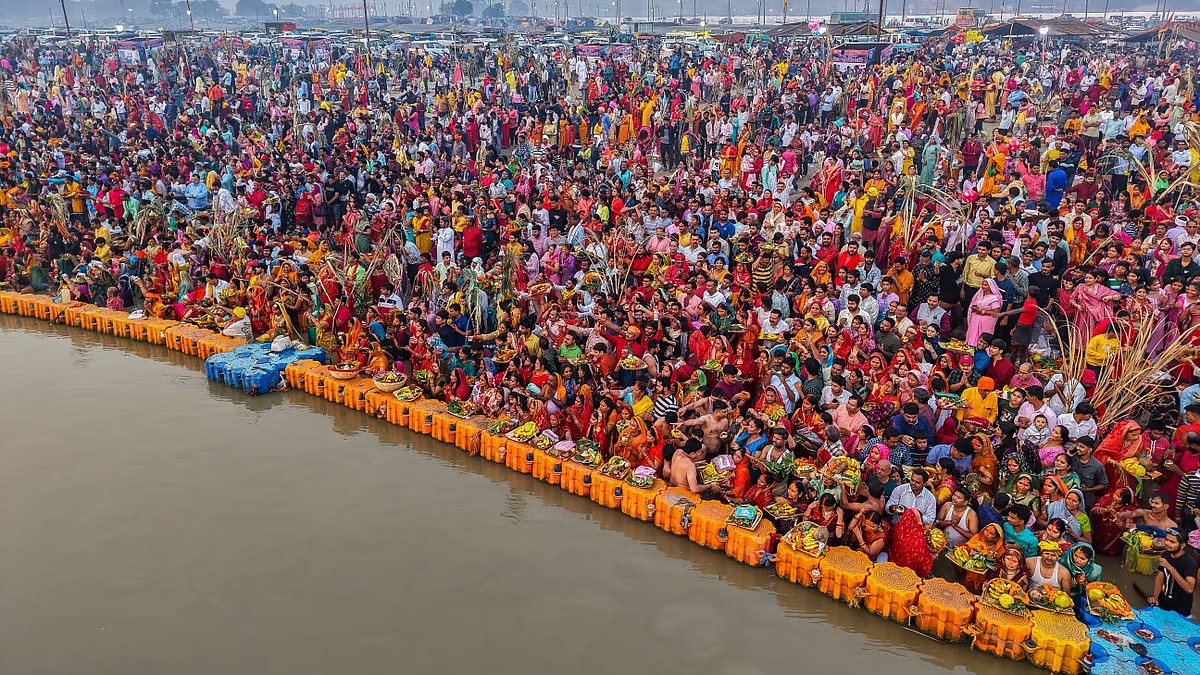We need a national debate on the efficacy of holding such large-scale gatherings and how they can precipitate spread of disease

Prime Minister Narendra Modi informed Parliament that the gathering of millions at the Maha Kumbh in Prayagraj marked the awakening of millions of Indians. Uttar Pradesh Chief Minister Yogi Adityanath went a step further and said that while the state government had expected 40 crore devotees to visit this 45-day event, more than 66 crore devotees came to this `rarest of rare’ event.
There are serious question marks about how Yogi arrived at this incredible figure. The Indian Railways disclosed that they carried 4.7 crore people to Prayagraj during the period of the Kumbh. Even if one were to give the benefit of the doubt to the state government and the railways and accept that another 1.3 crore people travelled ticketless, the public who travelled by train would be around 6 crore.
If one were to rope in the number of pilgrims who travelled by cars, buses, tractors, trucks or walked, it is unlikely that this figure would have exceeded 10+ crore.
How, then, can one explain the missing 46 crore? How did Yogi arrive at this magical figure? The government claims that their calculations were based on the numbers seen on 2,700 AI-powered cameras put up to track the public, but this is not a scientific way to have arrived at such a figure.
Yogi also went ballistic in claiming the Kumbh turned out to be a huge money spinner for the people of Prayagraj. There is little doubt that one section of service providers—the milkmen, chaiwallahs, tempowallahs, auto rickshaws, taxi drivers, etc. —must have earned a bonanza. But the examples Yogi cited to show that the Mahakumbh gave a major push to the state budget seem far-fetched.
Post Kumbh, he cited how students studying in Prayagraj had ended up earning crores during the Kumbh. Prayagraj has emerged as a hub of education and is known to attract over four lakh students annually for higher studies to enable them to sit for competitive exams. Yogi believes, wrongly, that each of these four lakh students is in possession of a motorcycle which he used to carry pilgrims to the river, thereby earning a minimum of Rs 1,000 a day. During a recent press convention, he claimed these students alone had earned Rs 4,000 crore.
There is no doubt that some unscrupulous motorcyclists were charging Rs 1,000 per passenger for a one-way ride to the riverbank, but when some activists and social media anchors checked with a cross-section of students, they pointed out these claims were highly exaggerated, as the majority of them came from poor families and were living six to a room, barely making ends meet. The question of their owning motorcycles did not arise.
The figure of 30 dead in the stampede on the night of Mauni Amavasya is also suspect. Seema Azad, national secretary of PUCL based in Prayagraj, pointed out, “We have prepared a report on the Kumbh, which is likely to be released shortly. We believe around 100 people died in the stampede. Our information is based on the number of missing people whose names were released by the state government and whose whereabouts remain unknown.”
A Newslaundry firsthand report had stated that their reporter, present on the night of the stampede, had done a body count of 79 dead in the stampede. It is not surprising that Minister of State Nityanand Rai, on March 18, refused to disclose the list of fatalities in Parliament, claiming it was a state subject.
A former Indian police officer, Amitabh Thakur, filed a petition in the National Green Tribunal questioning why the Uttar Pradesh Pollution Control Board or the Central Pollution Control Board had failed to provide online information about the quality of the water in the river Ganga.
A recent report submitted by the Central Pollution Control Board to the National Green Tribunal in February 2025 revealed alarming levels of contamination, primarily due to untreated sewage discharge and large-scale human activity. Worse, while the main river had been cleaned, high faecal coliform levels were observed in the smaller rivers, such as the Sasur Khanderi river, the Jondhwal, Rajapur and the Salori drains that empty into the Ganga, all of which were found to have faecal coliform levels 4,000 times above the permissible limit.
The NGT pulled up the Uttar Pradesh Pollution Control Board for not having submitted adequate information, but in an amazing turnaround, the CPCB claimed the water was well within permissible limits for bathing, and Minister of Environment Bhupinder Yadav informed Parliament of the same.
A senior gastroenteritis doctor at Apollo Hospital, Delhi, who understandably wanted to remain anonymous, said that post Kumbh, there was a 20 per cent increase in cases of diarrhoea, hepatitis, dysentery and skin diseases in patients who had to be hospitalised post their visit to the Kumbh. Cases of severe lung infection had seen a spike, with some patients having had to be admitted to the ICU.
If this can happen in one hospital in the capital, what must be the fallout in other cities and villages across Uttar Pradesh? The Kumbh Mela, held during Covid-21 in Haridwar, turned out to be a super spreader. We need to have serious documentation on how diseases spread more rapidly during the numerous religious events being held across the country where the public is confined to cramped spaces, with no proper arrangements for the disposal of solid and liquid waste.
Accurate statistics of visitor movements during the Kumbh Mela are practically impossible to maintain, as tourists arrive from across the world and within India via plane, road, rail, and foot. We need a national debate on the efficacy of holding such large-scale gatherings and how they precipitate the spread of disease across populations.
-- FPJ